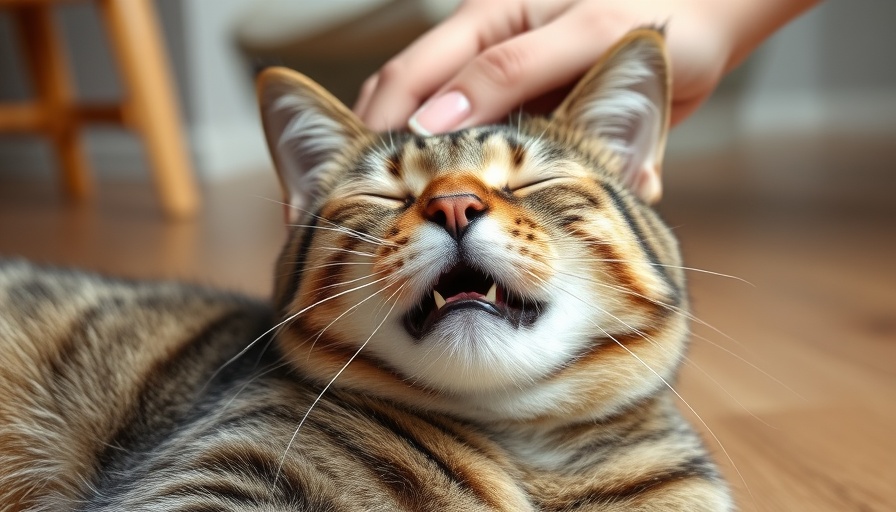
What Makes Cats Truly Happy?
As devoted cat owners, we often think we understand our feline friends, showering them with food, toys, and affection. However, many of us may be unaware of the deeper needs that truly spark joy in our cats' lives. The reality may surprise you: a staggering 99% of cat owners don’t know how to cater to their pet’s emotional and psychological needs. This article delves into 15 essential things cats cherish that most owners overlook, as highlighted in the enlightening video, "15 Things Cats Love and Only 2% of Owners Actually Do." Understanding these insights not only transforms your relationship with your pet but also enriches their quality of life.
In the video '15 Things Cats Love and Only 2% of Owners Actually Do,' we explore fascinating insights into feline behavior that inspired us to delve deeper into how owners can enhance their cats' happiness.
Building Intimacy Through Play and Interaction
One fundamental aspect is play. For cats, hunting instincts drive their need for playtime. Allowing them to win during play sessions nurtures a sense of achievement, while also alleviating stress and promoting confidence in their actions. This bonding experience reinforces your connection, as your cat recognizes you as their favorite hunting partner instead of just a provider of food.
Daily conversations can also play a pivotal role in deepening your bond. Cats have a remarkable ability to recognize our voices, associating them with positive experiences. Your tone, pitch, and the words you use during grooming, play, or casual moments communicate your affection, fostering a feeling of safety and connection.
The Importance of Vertical Space and Hideouts
One underappreciated aspect of feline happiness is the need for vertical space. Cats instinctively seek out high perches for safety, observation, and relaxation. Equipping your home with cat trees or shelves provides them with a sense of territory, reduces anxiety, and helps create a harmonious environment, especially in multi-cat households.
Furthermore, carving out quiet spots where your cat can retreat is vital for their mental well-being. This can be a simple cardboard box or a plush bed tucked away from bustling areas. When your cat knows they have a safe place to go, it enhances their confidence and allows them to manage stress more effectively.
Enhancing Emotional Bonds Through Everyday Choices
Daily rituals, such as mimicking grooming or offering affection based on your cat's preferences—their "no-touch zones"—enhance the bond you share. By respecting their boundaries and allowing them to groom you in return, you build trust and connection. These small gestures of love change how your cat perceives your relationship, demonstrating that you are attentive to their needs.
Taking a proactive approach, such as positive reinforcement when teaching good behavior, rather than punishment, demonstrates respect for your pet’s nature. This encourages a nurturing relationship based on trust, where your cat feels safe expressing its instincts and emotions.
The Power of Playtime and Routine
Structured playtime, even if it’s just for 10-15 minutes daily, provides predictability for your cat while reinforcing their natural hunting behaviors. This routine not only stimulates them mentally and physically but reinforces the bond of companionship between you two.
The Impact of Choice on Feline Emotional Well-Being
Another major point is the significance of choice and control in your cat’s life. By providing them the opportunity to decide when, where, and how they interact, you help them build confidence and independence. Cats are territorial and need to feel that they live in a space where they can express themselves without restrictions.
Why Understanding Your Cat Matters
Only about 1% of cat owners are aware of these subtle nuances in feline care, primarily due to misconceptions around their emotional needs. Cats are often incorrectly labeled as aloof and low-maintenance creatures; in truth, they thrive on companionship and trust. Failing to recognize the significance of emotional connections can lead to relationships that miss the richness of true companionship.
Understanding how to engage with your cat meaningfully opens up a new world of connection and care. Each interaction, from conversations to play, matters in creating a deeper emotional bond that transforms you from a caretaker to a beloved companion.
The Emotional Reward of Connection
When you begin to meet your cat’s emotional, mental, and instinctual needs, you elevate your relationship to something profoundly rewarding. These moments of connection can lead to behaviors in your cat that show their trust and affection, whether it’s with soft meows, gentle headbutts, or cozy cuddles.
To enhance your bond even further, remember that the values of patience, understanding, and engagement—qualities that define good cat ownership—go a long way. You’ll discover their personalities bloom in ways you hadn’t imagined, allowing you to share the joy of companionship with a beloved, loyal friend.
In conclusion, the key to fostering a meaningful relationship with your cat lies in recognizing their unique needs and instincts. Now that you're equipped with crucial insights to nurture this bond, take a moment to observe your cat's behaviors and implement these tips. Your companionship will flourish, enriching both your lives.
 Add Row
Add Row  Add
Add 




Write A Comment